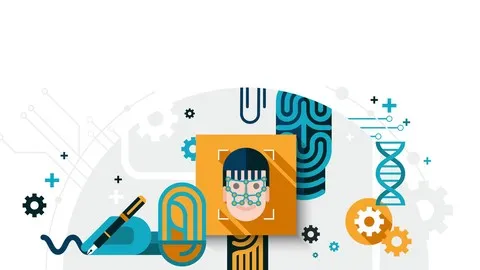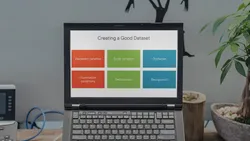
Introduction to Computer Vision and Image Processing 
This course provides an introduction to Computer Vision and Image Processing, exploring its applications in self-driving cars, robotics, augmented reality, and more. Learners will gain an understanding of the fundamentals of this field and its potential to revolutionize many industries. ▼
ADVERTISEMENT
Course Feature
![]() Cost:
Cost:
Free
![]() Provider:
Provider:
Coursera
![]() Certificate:
Certificate:
Paid Certification
![]() Language:
Language:
English
![]() Start Date:
Start Date:
17th Jul, 2023
Course Overview
❗The content presented here is sourced directly from Coursera platform. For comprehensive course details, including enrollment information, simply click on the 'Go to class' link on our website.
Updated in [February 21st, 2023]
What skills and knowledge will you acquire during this course?
By taking this course, learners will acquire knowledge and skills in the basics of computer vision, its applications, and how to use Python, Pillow, and OpenCV for basic image processing. They will also gain an understanding of related topics such as Machine Learning, Artificial Intelligence, Robotics, and Augmented Reality. Additionally, they will be able to develop their own computer vision web apps and deploy them to the Cloud.
How does this course contribute to professional growth?
This course provides a comprehensive introduction to Computer Vision and Image Processing, which is suitable for beginners. It covers the basics of computer vision, its applications, and how to use Python, Pillow, and OpenCV for basic image processing. Through the labs and exercises, learners can gain a better understanding of the concepts. Upon completion of the course, learners can pursue further studies in Machine Learning, Artificial Intelligence, Robotics, and Augmented Reality, or develop their own computer vision web apps and deploy them to the Cloud. This course can contribute to professional growth by providing learners with the necessary knowledge and skills to pursue further studies or develop their own computer vision web apps.
Is this course suitable for preparing further education?
This course is suitable for preparing further education in the field of Computer Vision and Image Processing. It covers the basics of computer vision, its applications, and how to use Python, Pillow, and OpenCV for basic image processing. Learners who complete this course can pursue further studies in Machine Learning, Artificial Intelligence, Robotics, and Augmented Reality. Additionally, they can develop their own computer vision web apps and deploy them to the Cloud. In order to get the most out of this course, learners should have some knowledge of the Python programming language and high school math before taking this course. They can also explore other related topics such as Machine Learning, Artificial Intelligence, Robotics, and Augmented Reality. Additionally, they can practice coding and image processing with Python, Pillow, and OpenCV.
Course Syllabus
Introduction to Computer Vision
In this module, we will discuss the rapidly developing field of image processing. In addition to being the first step in Computer Vision, it has broad applications ranging anywhere from making your smartphone's image look crystal clear to helping doctors cure diseases.Image Processing with OpenCV and Pillow
Image processing enhances images or extracts useful information from the image. In this module, we will learn the basics of image processing with Python libraries OpenCV and Pillow.Machine Learning Image Classification
In this module, you will Learn About the different Machine learning classification Methods commonly used for Computer vision, including k nearest neighbours, Logistic regression, SoftMax Regression and Support Vector Machines. Finally, you will learn about Image features.Neural Networks and Deep Learning for Image Classification
Object Detection
In this module, you will learn about Neural Networks, fully connected Neural Networks, and Convolutional Neural Network (CNN). You will learn about different components such as Layers and different types of activation functions such as ReLU. You also get to know the different CNN Architecture such as ResNet and LenNet.Project Case: Not Quite a Self-Driving Car - Traffic Sign Classification
In this module, you will learn about object detection with different methods. The first approach is using the Haar Cascade classifier, the second one is to use R-CNN and MobileNet.Pros & Cons

Informative at a high level

Fun to complete

Constant and timely support

IBM Cloud not fit for purpose

Poorly written labs

Little insight into math/OpenCV
Course Provider

Provider Coursera's Stats at AZClass
Discussion and Reviews
0.0 (Based on 0 reviews)
Explore Similar Online Courses

Troubleshooting Microsoft Teams: File Issues

Cognitive Psychology: Employee and Customer Behaviour

Python for Informatics: Exploring Information

Social Network Analysis

Introduction to Systematic Review and Meta-Analysis

The Analytics Edge

DCO042 - Python For Informatics

Causal Diagrams: Draw Your Assumptions Before Your Conclusions

Whole genome sequencing of bacterial genomes - tools and applications

Introduction to Computer Vision

Learn Computer Vision with OpenCV Library using Python


Start your review of Introduction to Computer Vision and Image Processing